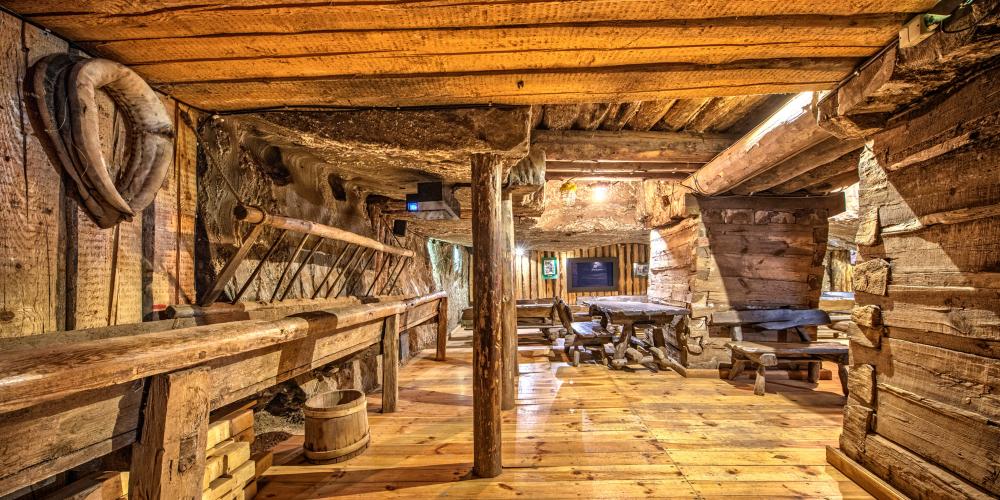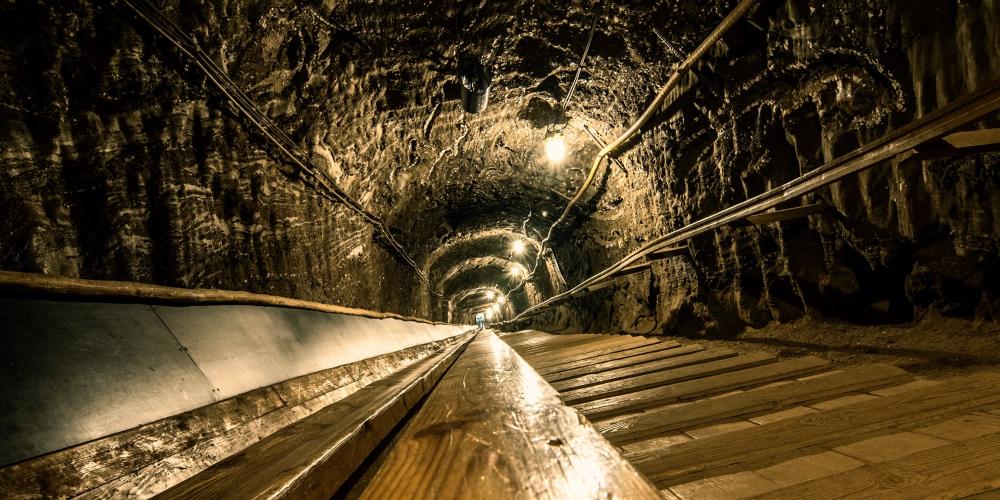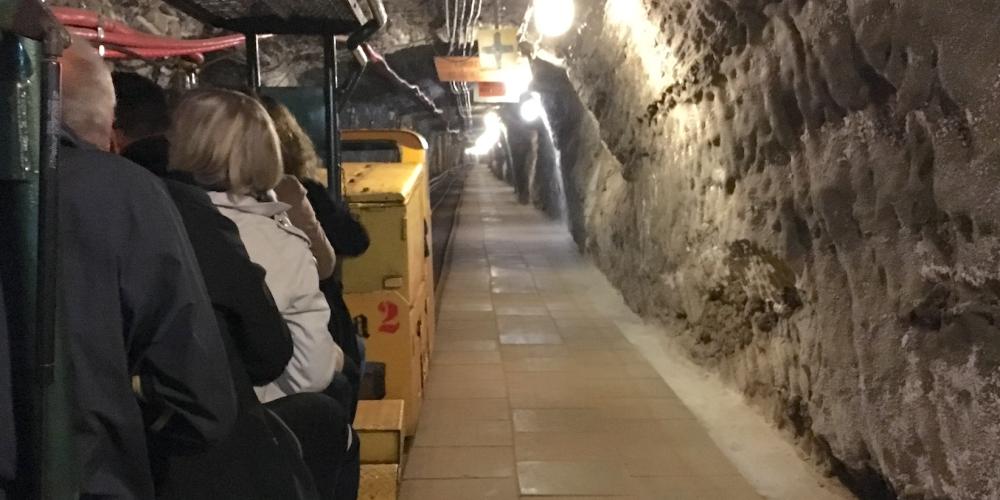Tourist Route in Bochnia Salt Mine

The tourist route begins in the Campi Shaft building, which was dug in the middle of the 16th century and reaches to the 10th level of the mine. Before descending into the mine, your guide shows you a unique engineering monument—an operating steam engine from 1909 that lifted 100 carts of salt in one shift and was used until 1996. Then, you learn about the minerals, rocks and forms of salt that are encountered in the Bochnia Salt Mine.
After hearing the classic greeting of miners, "Szczęść Boże" (God Bless), you descend in the mine elevator to the depth of 220 metres, then you take a mine train that quickly covers 1 km of the first level of the mine. You start your journey at the "Sutoris" pit bottom, the oldest shaft in Bochnia, dating back to the 13th century.
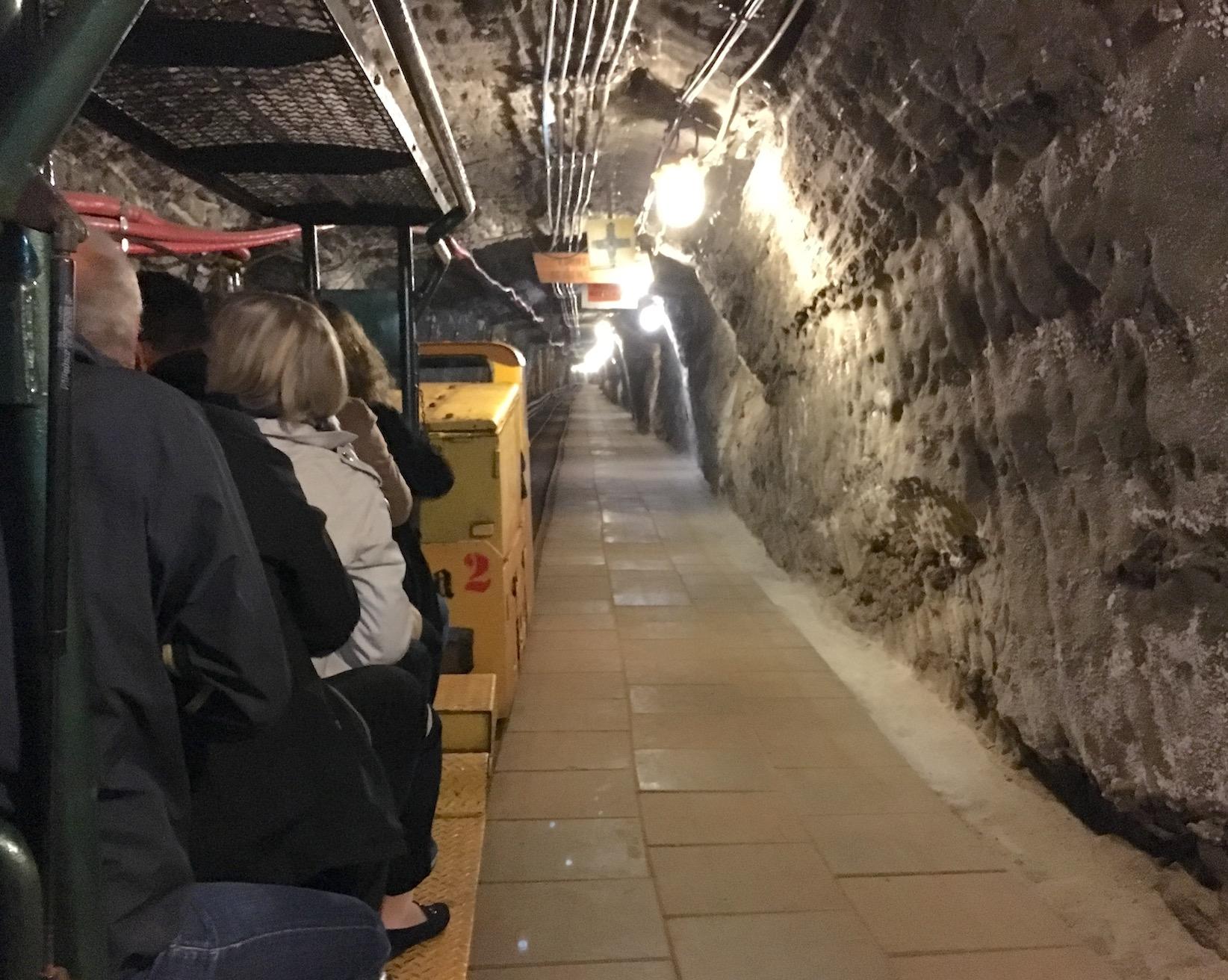
Along the route, you'll see galleries and chambers with unique shapes and geological structures, various types of supports, sculptures made of salt, and historical mining tools and equipment. You'll be enchanted by the texture of the walls and vaults—overgrown thin layers of salt and anhydrite, salty drip-stones and efflorescence create magnificent natural ornaments. Tourists are particularly fond of Christian Chambers—narrow and slender, and carved high up.

The immense power of the Carpathian Mountains is evident in the mine—and the fact that the mountains are still moving over this area, compresses the galleries and destroys the support framework. Shattered and bent wooden supports, tools, wicker and ropes devoured by the earth, with only parts sticking out of the salt walls. But not to worry—the engineers are constantly monitoring and securing the pits, ensuring the safety of workers and tourists.
Along the tour, you'll hear Polish kings, Genoa merchants, and the ghost of a Cistercian monk. Audio dramas, animations, and interactive presentations show the stages of development of mining methods and challenges of mining through the ages. At the end, you descend 307 stairs or a wooden slide (36 metres long) to the largest chamber in the mine, the Ważyn Chamber. Its surface area is 2,500 square metres and is divided into five sections including a large sports pitch, an underground restaurant called Ważynek, a cinema, a conference section, and a spa where you can spend the night.
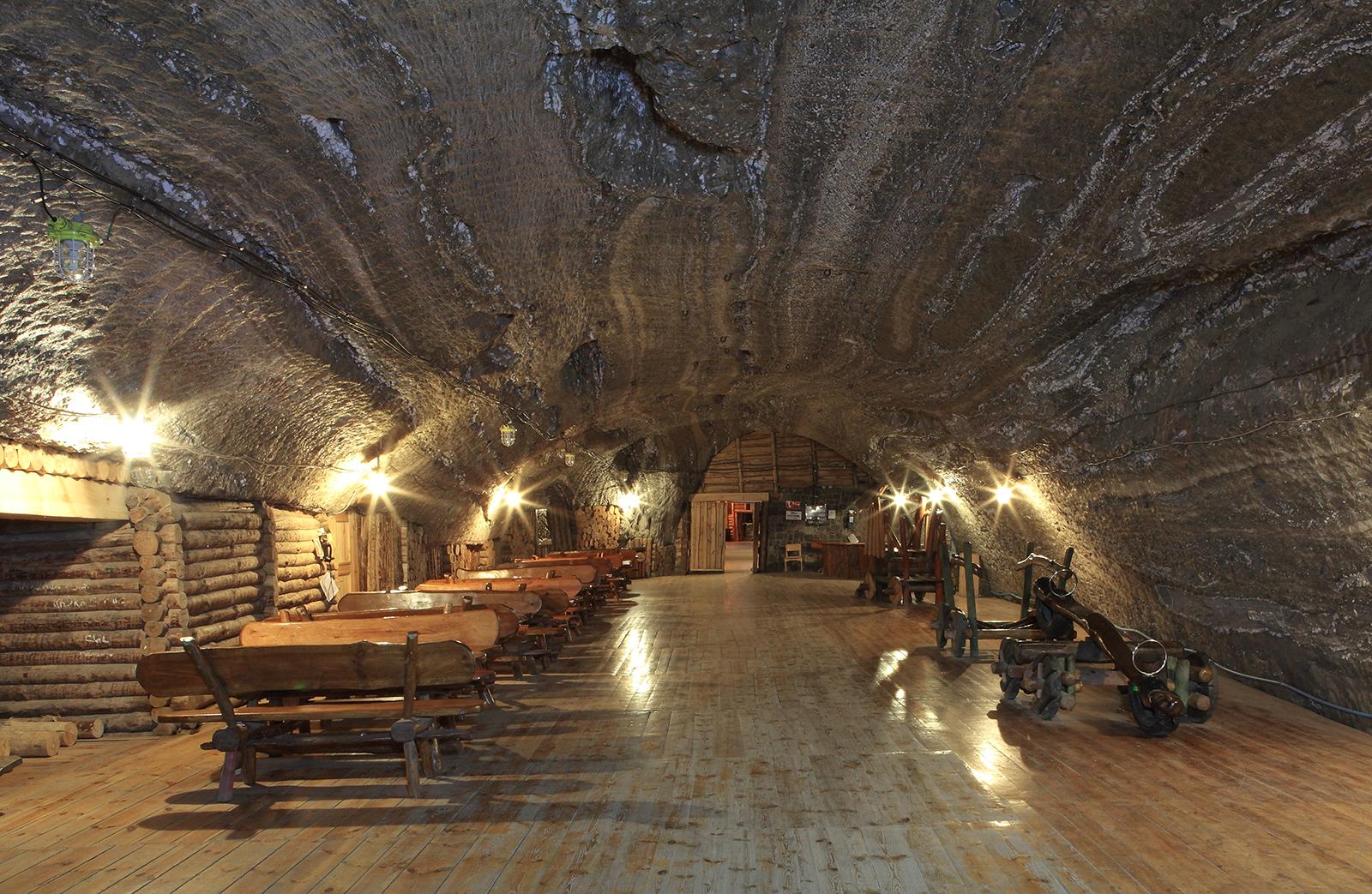
After seeing the Ważyn Chamber, you can enjoy a unique experience in the Bochnia Salt Mine: the underground boat passage in Chamber 81 on the third level of the mine. You can also walk along narrow galleries known as "Końska Droga" ("Horse's Path") which was used to lead horses to work in the past. You can see a layer of volcanic ash in the wall, from 13.6 million years ago, which was used to determine the age of the salt deposit.
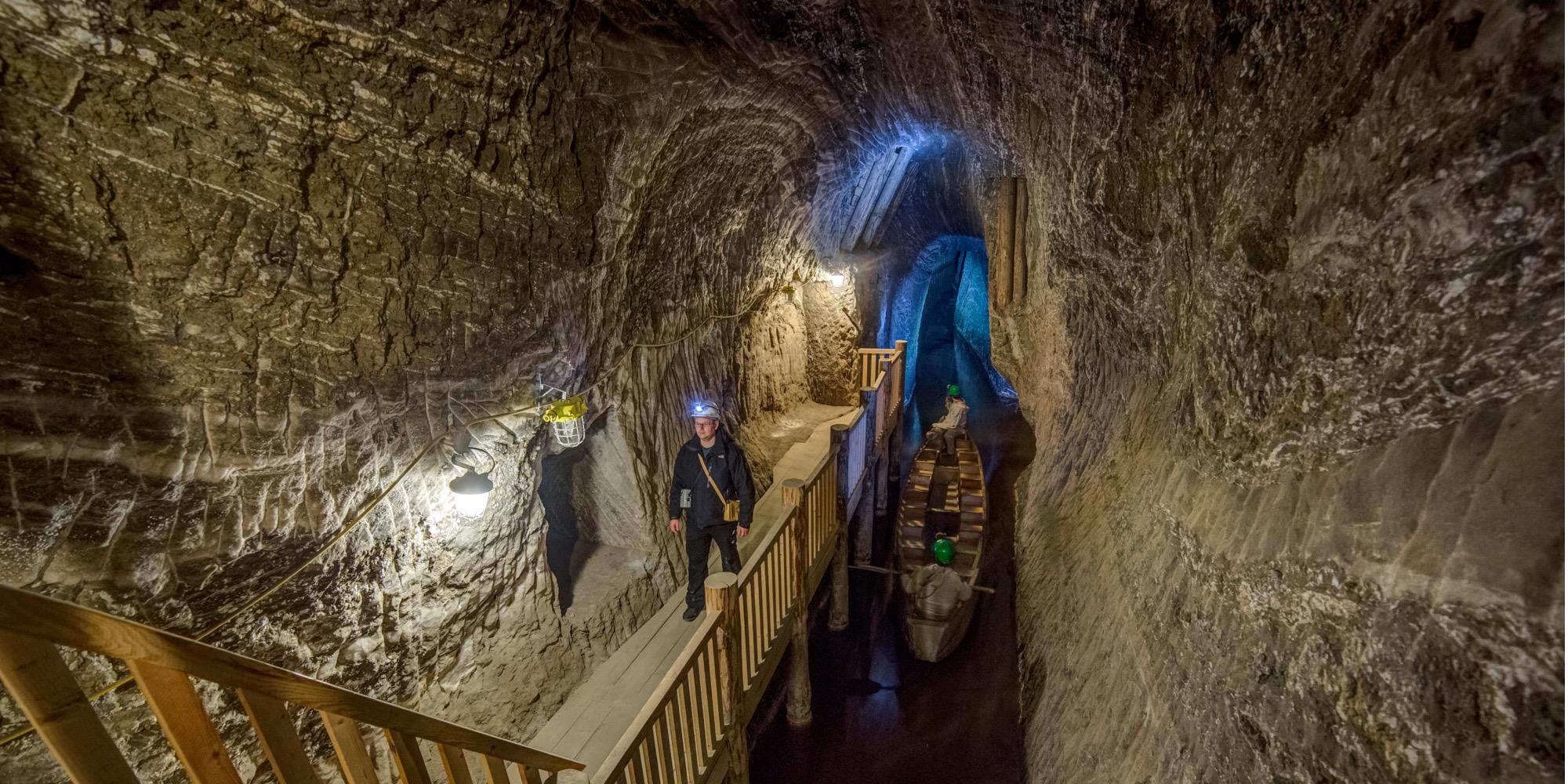
At the end of the tourist route, sitting in the railway carriage, you'll stop at the most valuable location of the Salt Mine: the Chapel of St. Kinga, which dates back from 1747. It features a beautiful altar with a painting presenting the legend of St. Kinga and the discovery of rock salt.
Tourist Route in Bochnia Salt Mine
**Individual tourists: **
Monday - Friday: 9:30, 12:00, 13:00, 15:00
Saturday - Sunday: 13:00, 15:00
Groups:
Monday - Friday: 8:00 - 18:00
Saturday - Sunday: 9:00 - 16:00
Advanced booking is required.

